With the ‘Great Resignation’ affecting industries across the board, we look at why retail inventory visibility and RFID technology is crucial for attracting and retaining talent
Is RFID Technology the Solution to the Great Resignation?

It’s now been two years since the Covid-19 pandemic began to seriously disrupt business operations around the world. As a consequence, retail management has dealt with a range of problems including supply chain issues and store closures.
However, one additional problem that has been exacerbated by the pandemic is the ‘Great Resignation’. For the past two years, employees have left their jobs at an alarming rate – in the US alone, 4 million workers quit their jobs in July 2021. A survey of over 30,000 workers around the world found that 41% were considering quitting their jobs in the second half of 2021.
While the ‘Great Resignation’ has severely affected industries like healthcare and technology, the retail industry has not been immune. In August 2021, over 720,000 retail workers quit their jobs, second only to the foodservice and accommodation industry. As it stands, 96% of retailers say they are struggling to find store employees, and 88% said the same about hiring in distribution centres. In an industry that is still reacting to issues like supply chain disruption and wavering sales, this is a huge blow.
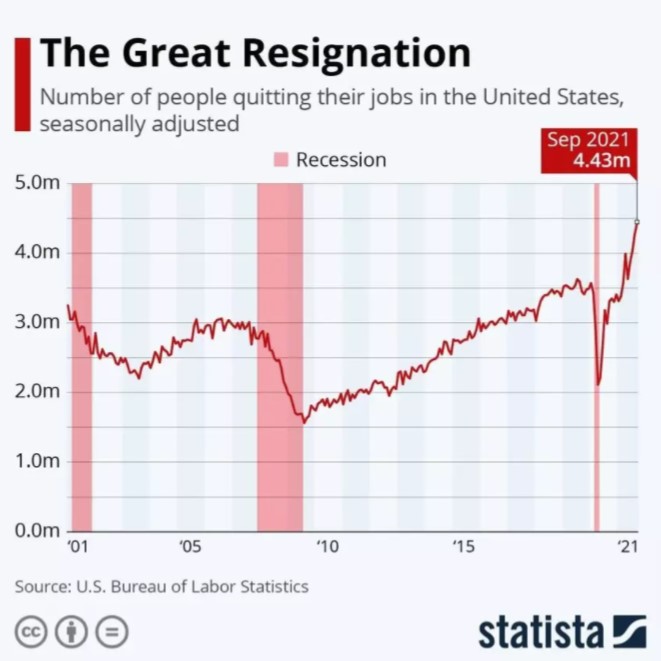
Ultimately, high employee turnaround is bad for business. There’s a clear correlation between happy employees, more satisfied customers, and higher sales; unhappy staff can result in the opposite. If retailers want to overcome the various issues that have plagued retail over the last two years, they need loyal, talented employees. But what is the solution to the retail talent management crisis?
Well, it could come in the form of retail inventory visibility software. Technology like RFID can have a huge impact on both the customer experience and an employee’s work, and retailers who implement this technology could find that it improves both their operations and their retail talent management.
The Great Resignation: How is it Affecting Retail?
Over the course of 2021, workers across a variety of industries have been driven to quit their jobs. Record quit rates have been recorded in sectors like healthcare, social assistance, and nondurable goods manufacturing. However, while these industries have seen resignations come in waves, in retail, a talent management problem has persisted throughout 2021. For most of the year, the quit rate has been higher than the 2019 average, and while it reached a peak in the summer, the resignation rate continues to be higher than normal.
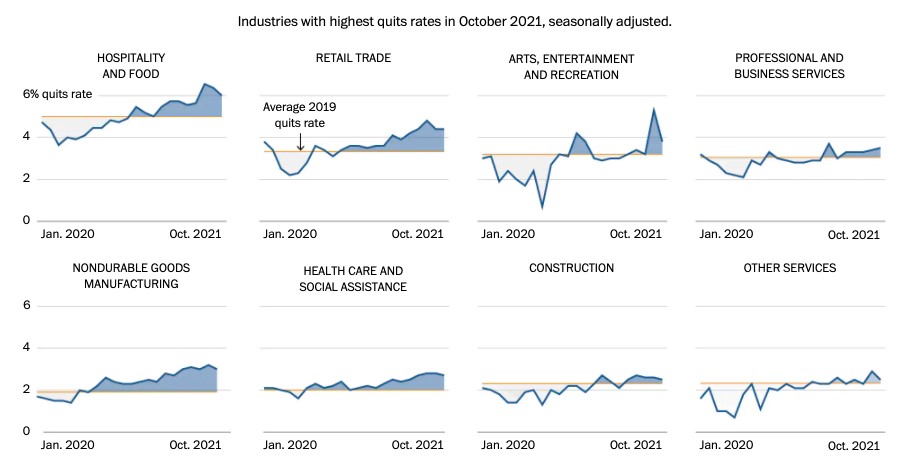
Undoubtedly, retail workers have had to adapt to difficult working conditions over the past two years. They may have had to work longer hours as companies try to recuperate lost profits during periods of closure. At the same time, their work environment has changed drastically as retailers take into account local public health advice including the use of masks and implementing social distancing in stores.
As we look towards a more normal year for retail in 2022, companies need to understand the Great Resignation and what is driving retail employees to quit. Ultimately, the biggest cause of retail resignations is stress. According to one survey, 26% of retail workers considered leaving their job in 2021 because of mental health concerns, and 5% had already left the sector because of stress-related issues.
Considering the multitude of problems that retailers have had to adapt to over the past two years, this is no surprise. But it also shows that retailers need to do more to prioritise employee wellbeing if they are to overcome the Great Resignation and outperform in 2022.
What are Candidates Looking For?
In order to succeed at talent management in retail, companies also need to know what employees prioritise when looking for a new role. Without this information, it can be difficult to attract talent to your retail business; something that is already an issue.
In the US, 97% of retail brands say that they have experienced difficulty when hiring new store employees. In an industry where there is already a shortage of applications and a growing number of employees are leaving their retail roles, it’s crucial that retailers can target applicants with benefits and considerations that they actually want.
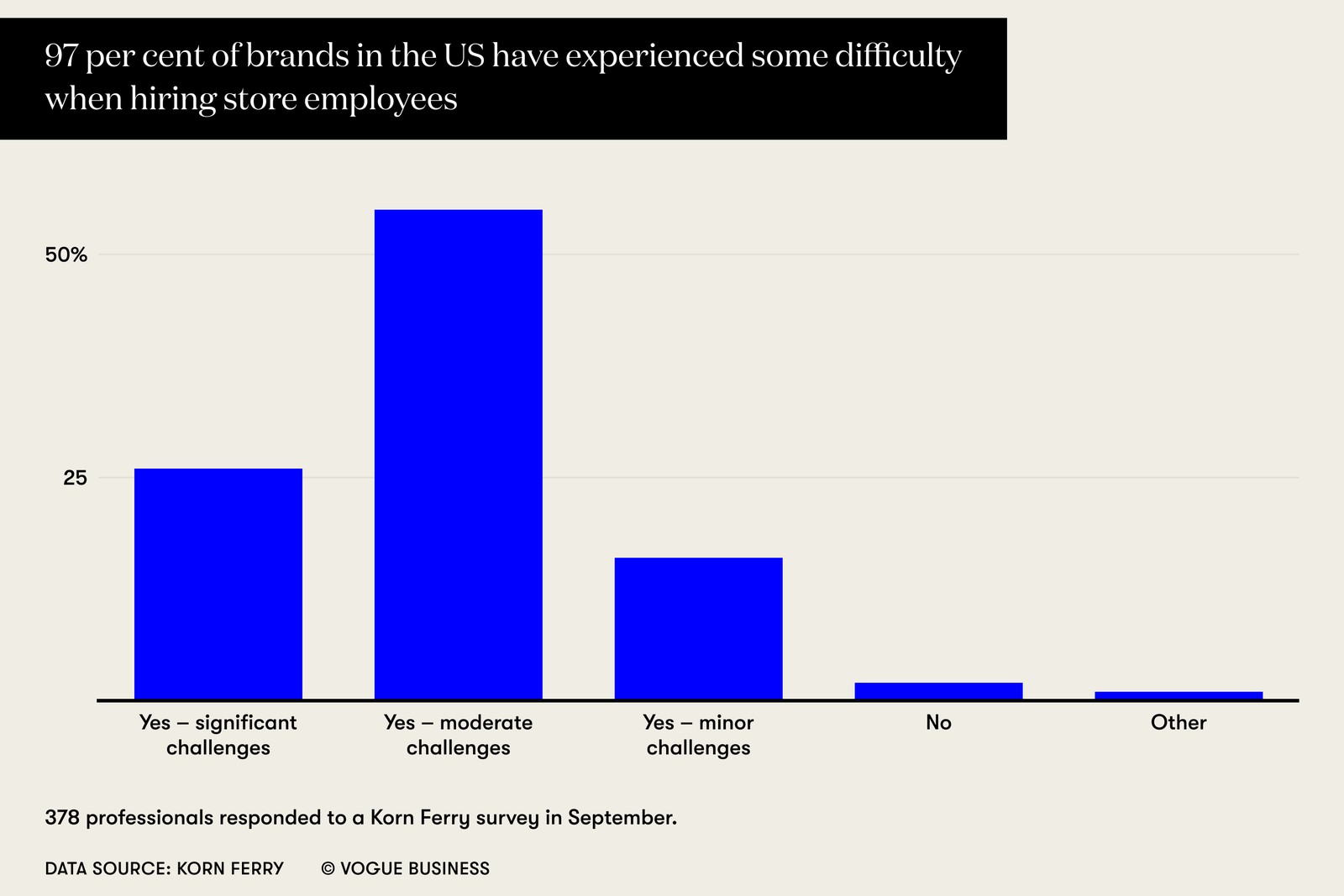
Firstly, we know that retail workers are now prioritising their mental health at work. 84% of retail employees have said that their mental health has deteriorated over the past year, and this is evidently contributing to high quit rates in the industry as well as a reluctance towards taking jobs in retail. If companies want to attract the best candidates for in-store roles, as well as in distribution centres, they need to show that they care about employee wellbeing.
Part of this means establishing trust between retail management and workers and showing employees like shop floor staff that they can approach their work independently. Some brands have gone further, though. Retailer Gymshark recruited an entire mental health support team to provide support to workers. Potential retail employees are also asking companies to invest in their wellbeing long-term. This includes offering additional training to improve skills and offer opportunities for growth within roles.
Elsewhere, future workers are also reimagining how productivity is actually calculated. For many workers, it’s no longer about traditional metrics like sales and performance. Instead, retail talent management teams need to foster work environments that prioritise employee value over performance – that is, how much value employees provide to businesses outside of their output.
How can Retailers Attract and Retain Talent?
Evidently, retailers are having difficulty attracting the best talent to retail positions. So, what can they do about this? In an article last year, we explored how technology can help improve the employee experience and thus retain employees. Employee experience technology can accomplish three major goals in retail talent management: increase productivity and goal accomplishment, improve employee agency at work, and help employees be more creative at work.
As a result of the difficulty in retail talent management, some brands are already making changes to their HR operations. For example, over 30% of retail companies have already implemented higher salaries in order to attract retail talent to their businesses. Amazon introduced immediate sign-on bonuses of £1,000 in order to attract talent, targeting warehouse workers specifically. Walmart, on the other hand, has started offering weekly bonuses to its employees, which could pay out upwards of $200 per week.
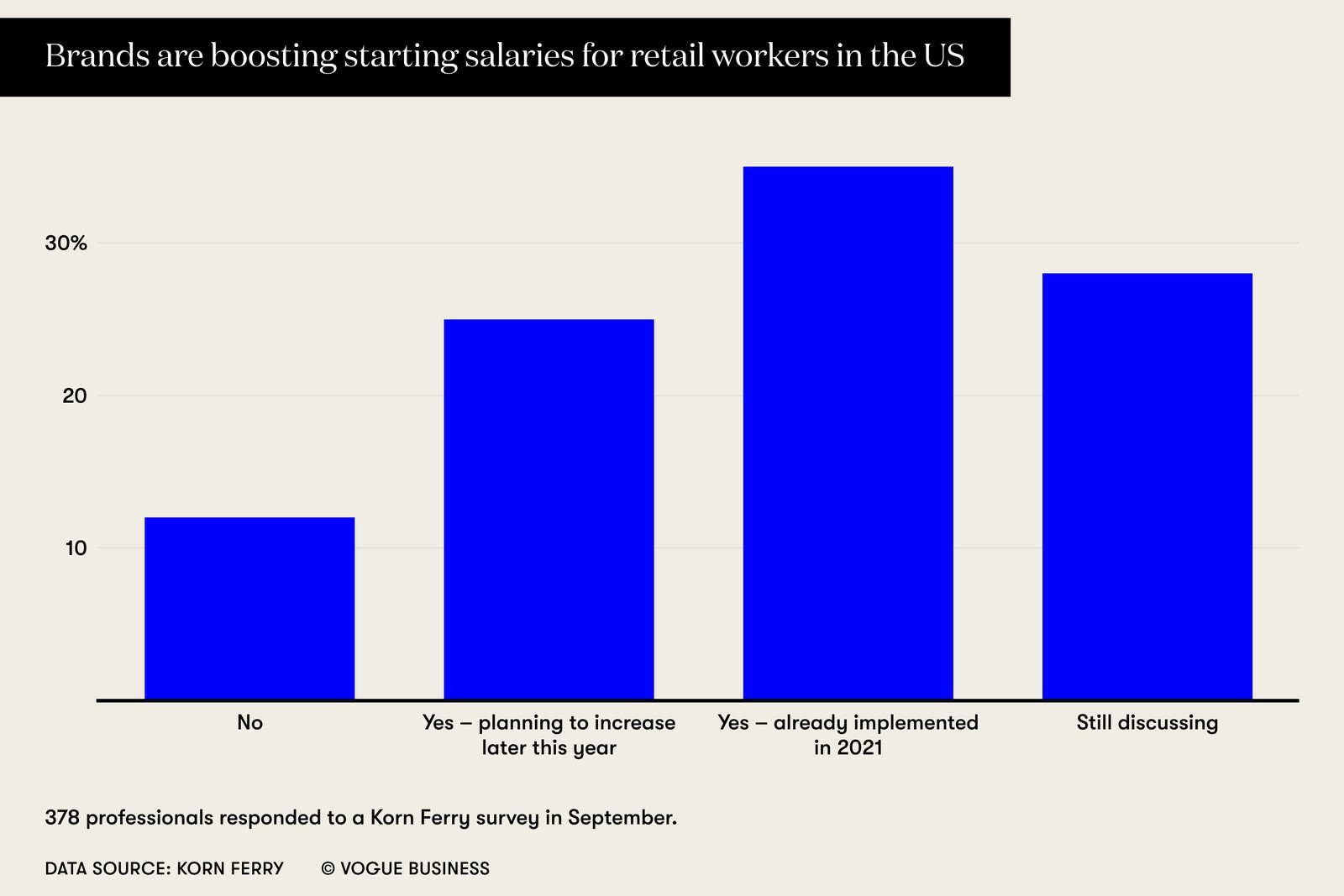
Retailers with brick-and-mortar stores are also introducing additional employee benefits in order to drive store hiring. This includes wellbeing benefits that seek to improve the mental health of employees. In recent years, John Lewis has adopted new HR policies such as six months of equal parenthood paid leave for all staff and two weeks of paid leave if staff members experience the loss of a pregnancy. Other benefits that retailers are increasingly offering include flexible work hours.
However, technology can also be utilised to help retain employees in retail. Studies show that staff increasingly want their employers to be invested in their work progress – 85% of people say that they want technology to help define their future. For example, 32% say that they want their employers to leverage technology in order to help them progress towards career goals.
One example of utilising technology to help support employees is with retail inventory visibility technology like RFID. Inventory visibility is crucial in retail – without a transparent view of stock, it’s difficult to implement omnichannel services or flexibly adapt to consumer behaviour. However, technology like RFID can also prove a valuable solution to retail talent management.
Empowering Employees Using RFID Technology
Not only is RFID technology a valuable inventory visibility solution in retail, but it can also help improve the employee experience and retain top talent. It’s important to note that the generation that are the latest big spenders, Generation Z, are also the generation that retailers will likely see applying to retail roles. Thus, they are not just retail consumers, they are also employees. With this in mind, technology like retail inventory visibility software can be a valuable way to hold onto these young employees and make them feel valued at work.
Digitising Operations
Firstly, owing to high digital literacy, this generation now expects processes to be digitised and automated, and may be less willing to persevere with outdated operations at work. One of these traditional operations in brick-and-mortar retail stores is physical inventory counts. This process, when performed manually, can require a huge amount of time and manpower. Repetitive procedures like manual stocktakes can also contribute to employee stress, especially if employees make errors, which is more likely with manual operations.RFID technology, on the other hand, can make manual stocktake a thing of the past and increase inventory accuracy to 99%. With RFID tags in each piece of stock, employees need only scan each product with a reader and can produce a full stocktake in around 30 minutes. This leaves employees feeling confident about their work and able to spend more time actually interacting with customers.
Improving Customer Experience
Similarly, customer experiences can also improve when retailers use inventory visibility software. As retailers recover from the effects of the pandemic, giving customers an optimal experience is more important than ever. Happy customers become loyal customers, and loyal customers lead to increased sales. 25% of customers switch brands more today than ever before, so attracting those who will keep returning is crucial.
Retail inventory visibility software, when used alongside an all-in-one mobile application, means employees can assist customers instantaneously with stock requests. In one survey, 42% of people said that ‘unhelpful staff’ was one of the main causes of a bad shopping experience, but businesses who take advantage of inventory visibility software in their retail operations can improve the chance of a better experience, as well as make employees feel confident at work.
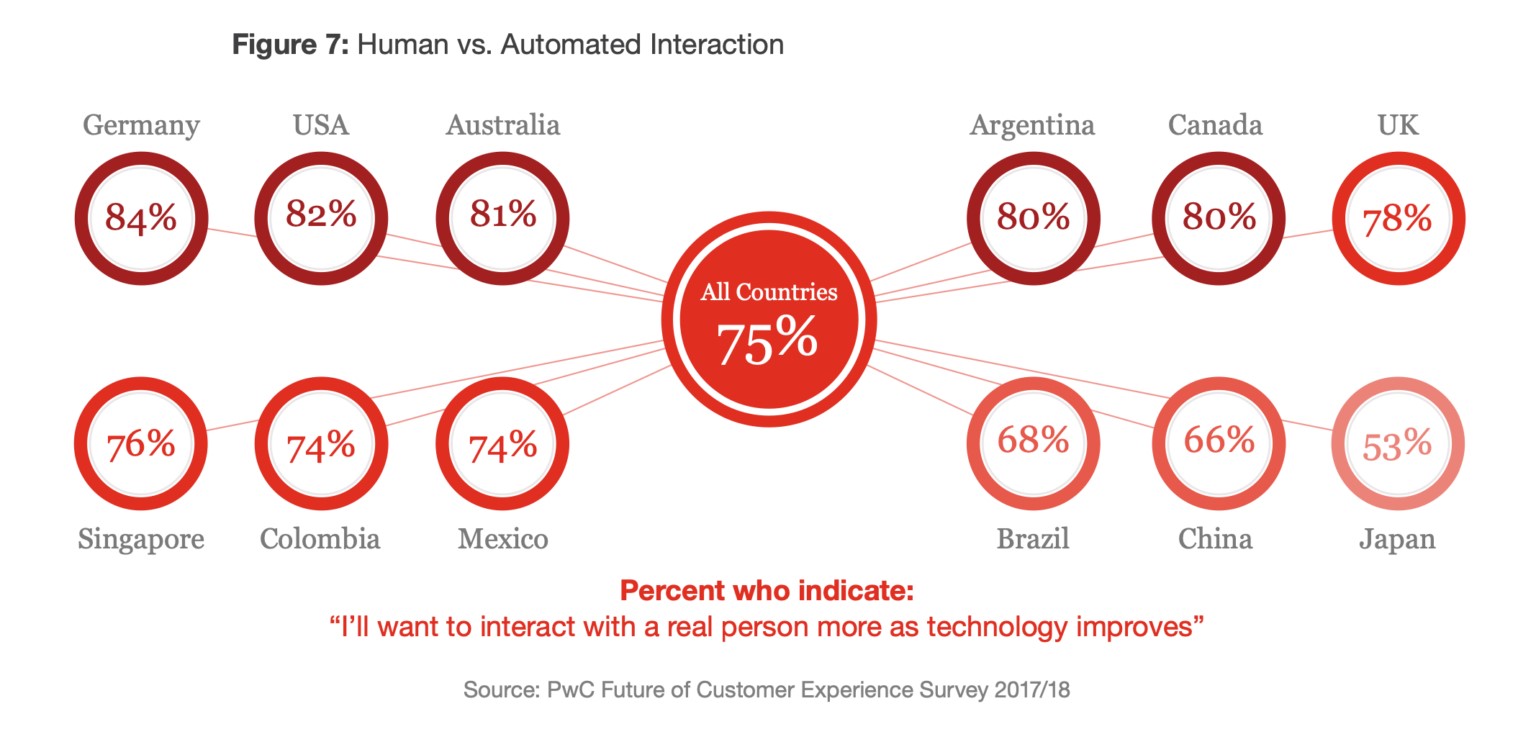
Reducing Stress at Work
An all-in-one digital inventory visibility solution for retail can also reduce stresses on workers, leading to better productivity and reducing employee turnover. RFID technology can improve productivity and reduce the chance of stock delays and out-of-stock notices, leading to better interactions between employees and customers.
Retail inventory visibility software can also help managers make better staff decisions. With complete inventory transparency, it’s easier to see if there are going to be any supply chain issues. Instead of staff reacting to problems as they happen, which can cause undue stress if issues are completely unexpected, managers can plan for disruption. This can reduce the chance of staff working overtime or unexpectedly long hours and allow workers to focus on their day-to-day roles and the customer experience.
The Importance of Inventory Visibility for Retail
Aside from improving your retail talent management, there are many other reasons to consider investing in inventory visibility software for retail. Digitising processes like stock takes and making your inventory more transparent can have huge benefits to your business. These advantages can speed up operations, increase productivity, and improve the customer experience.
Additional benefits to implementing RFID technology include:
- Implementing efficient omnichannel services
- Increasing product availability
- Optimised supply chains
- Monitoring stock shrinkage

A fast fashion RFID solution
Stock accuracy, on-floor availability, and omnichannel applications in stores.
Book a demo with RFID to find out how our cloud-hosted RFID solution could help you improve your retail inventory visibility. Our multi-user app can provide intelligent stock takes and a smart in-store replenishment process and later, you can scale the solution to offer omnichannel services and effectively manage your entire store operations with real-time, item-level inventory visibility and analytics



